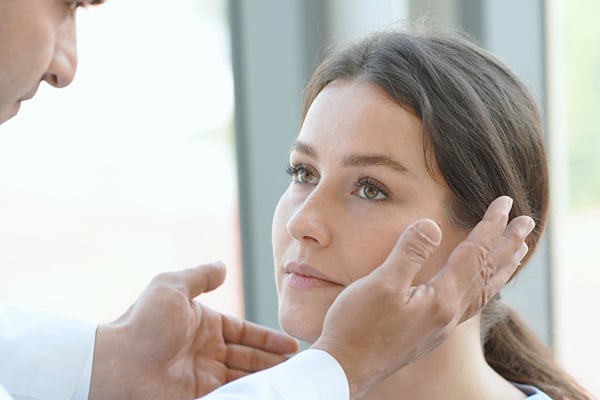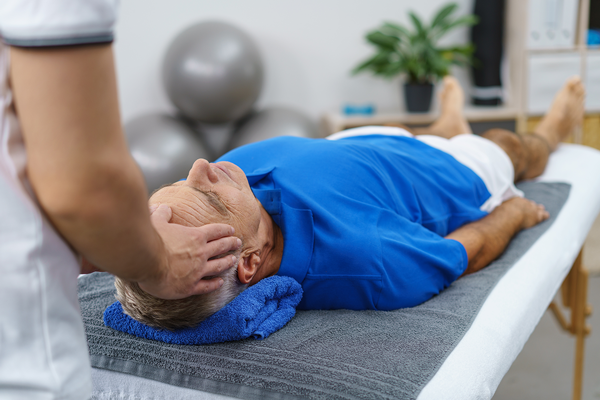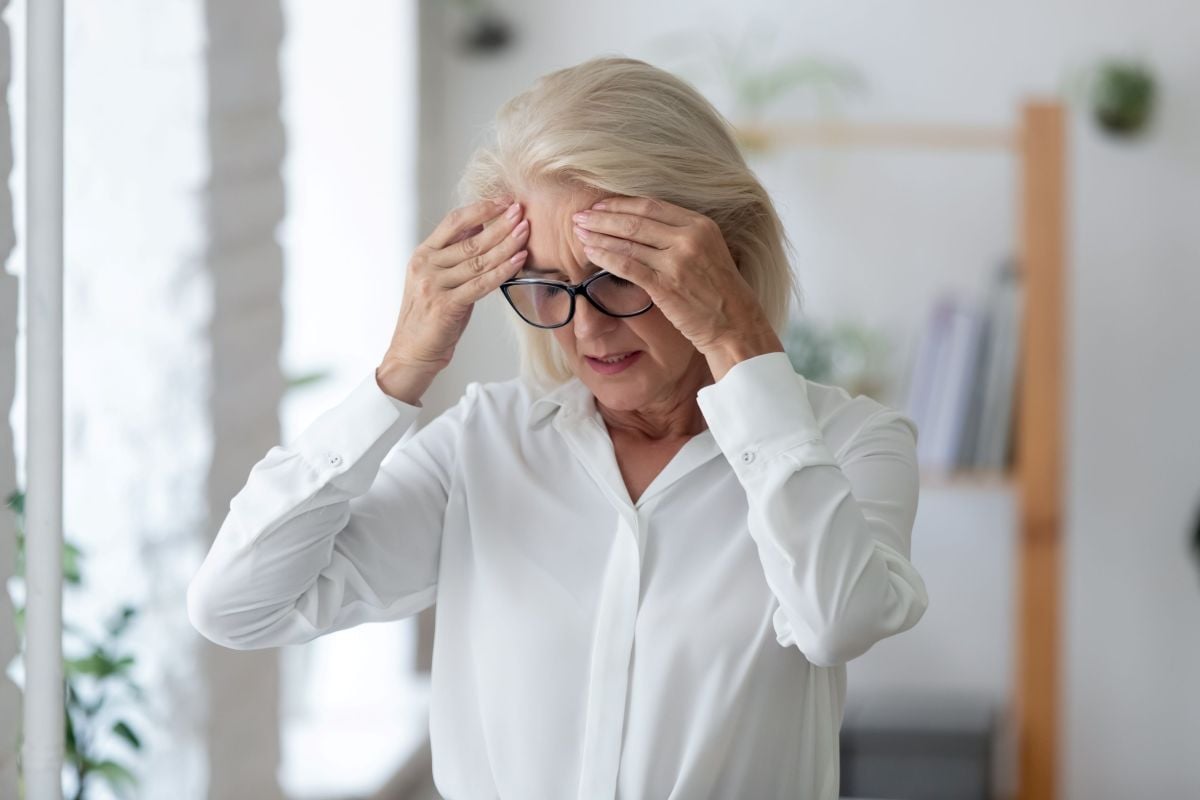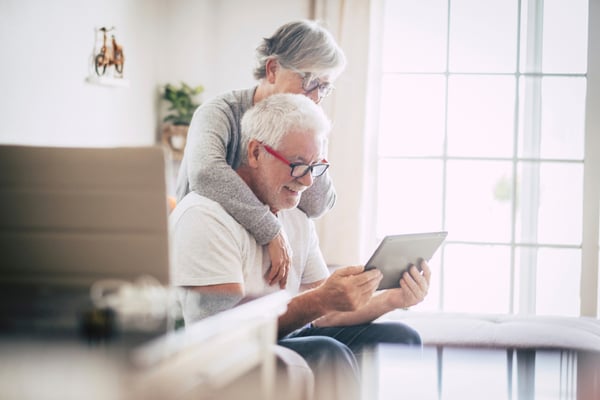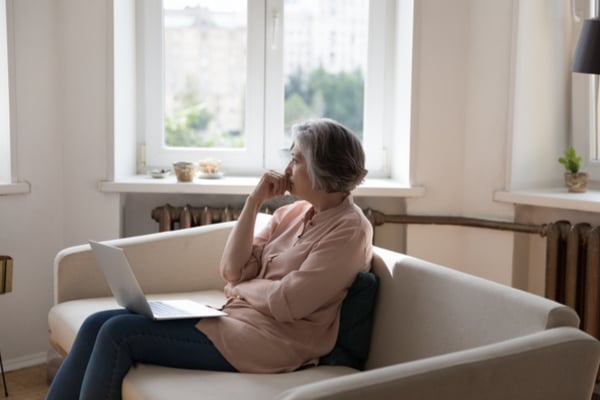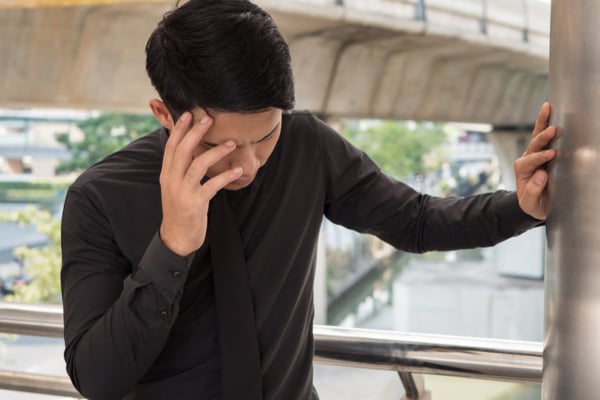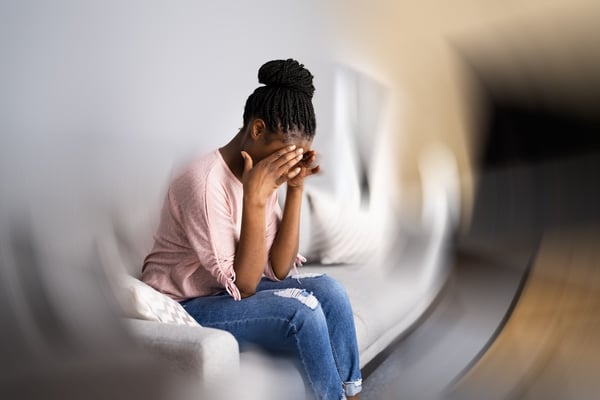
What exactly is benign paroxysmal positional vertigo (BPPV)?
Disclaimer: During our Dizziness Can Be Stubborn webinar, many inquirers asked for specific treatment recommendations for their particular scenario. Please be advised that as per our College regulations, I am not permitted to provide treatment advice for an individual’s symptoms without performing an assessment. Hopefully my more general responses will help answer your questions, but the best approach is to discuss your particular symptoms with your Doctor and Vestibular Therapist.
BPPV (Benign Paroxysmal Positional Vertigo) is a condition where some of the crystals that we all have in our inner ears can get into the wrong place.
The crystals are detected by the characteristic eye movement that they create if in the wrong place when the head is moved into a position that makes them shift with gravity. There are different canals that they can get into and different variants of BPPV, all giving different eye movements. That’s what allows us to figure out (a) if it is really BPPV, (b) if so, find where the crystals are and (c) what the appropriate maneuver is for the particular variant a person has.
The ‘go-to’ treatments for BPPV are the various repositioning maneuvers rather than exercises, but sometimes exercises come into play for resistant cases or for mild post-BPPV motion sensitivity or imbalance.
Yes, you should have the ‘back-and–forth’ eye movements (nystagmus) with BPPV. In mild cases it can be tough to see without the infrared goggles.
BPPV can be transient or can ‘hide’ on testing depending on where the crystals are at any given time, such that you don’t always test positive even though you have it. It isn’t uncommon for us as therapists to be sure we’re going to find it based on the history, and we just don’t. Then next time we see the person, there it is clear as day!
Potential causes of BPPV
- There appears to be a bit of a relationship between surgery (prolonged laying positions) and a chance of getting BPPV.
- There appears to be a relationship between migraine and BPPV, but not a straight-line ‘cause and effect’, just an increased incidence in those with migraine.
- BPPV is not directly caused by menopause, but the incidence does increase with aging so in that respect you could have a relationship.
- The crystals out of place do not give you a physical sensation in the ears, like fullness or popping, nor does it give tinnitus.
- Body alignment / things being “jammed up” does not cause BPPV and chiropractic adjustments do not treat BPPV.
- There have been no foods, fluids or supplements found to trigger BPPV or prevent it, although there does appear to be an association with Vitamin D deficiency and poor bone density.
- Cleaning out earwax has no effect on BPPV or any other vestibular problem.
- While most cases of BPPV come ‘out of the blue’, concussions/head trauma can also set it off.
Preventing BPPV
There does not appear to be any reliable strategies one can do to prevent BPPV, like doing self-maneuvers when in between episodes. There is a small correlation between sleep side and which side people get BPPV on but unless you get frequent reoccurrences, you really shouldn’t be limiting your activities or sleep positions. While you have BPPV you’ll be better able to avoid making the spinning start if you avoid laying on the involved side in most cases, but once it’s cleared you can sleep on either side. Betahistine (Serc) is commonly prescribed but not effective in the treatment of BPPV.
Symptoms of BPPV
Typical symptoms of BPPV include brief (<1 minute) of spinning with rolling over in bed, laying down/sitting up from bed, bending, looking upward and quick head movements. Once out of bed it can pitch a person off-balance as well.
If dizziness is ONLY when you get up from a sitting or lying position and no other movements described above, that could be related to a drop in blood-pressure. Be sure to consult with your doctor if this is the case.
Can Epley maneuvers help?
Q: "Can the Epley maneuver completed when not dizzy as a preventive measure cause the crystals come dislodged? Is it better that the Epley maneuver be done for one side only during a session and the other side on another day? I sometimes feel off if I complete for the R and L the same day."
A: While it would seem to make sense, the research doesn’t support doing this as a preventative measure. I’d say that if you already had some crystals that were loose but still in the correct chamber, and went back into an Epley Maneuver, you could conceivably move them out into one of the canals where you don’t want them to be. While not impossible, it would be very unlikely for you to have active BPPV on both sides such that you would be doing a home treatment for both with any regularity. Remember, the Epley should be effective in clearing the crystals in 1-3 treatments, after which there would be no reason to be doing it anymore. If it’s not working it’s likely not the correct maneuver for your type of BPPV, or possibly not BPPV at all.
Q: Can you comment on how effective Epley Maneuver apps work for BPPV?
A: An app might help guide you successfully through an Epley Maneuver, however that would depend on having correctly identified the involved ear, and it being the variant of BPPV that the Epley is effective for. If it is a different location or variant, the Epley will not be effective, app or otherwise!
How long can BPPV last?
BPPV can last for years if untreated, but can also go away spontaneously, and of course responds very well to treatment. As mentioned above, if being treated, the most common variants are normally corrected in 1-3 treatments if the therapist has identified the correct location, variant and maneuver indicated. There are a few rare variants that can be a bit more stubborn to treat, but if taking more than 3 treatments, the therapist should be retesting and considering whether or not it is really BPPV vs. something mimicking BPPV.
Q: My mom has BPPV and is followed by a therapist. When she travels by air that seems to trigger reoccurrence. She has a sheet of exercises from her therapist that she wants me to do with her. I am concerned about doing this on an 80yr old neck. Should I be?
A: Firstly, it is a little unusual for BPPV to be triggered by air travel so hopefully you have the right diagnosis in the first place. I don't know what specific exercises you're referring to but when it comes to the maneuvers we use for treating BPPV, my therapists screen the neck each time to make sure the patient has the range necessary, and if not there are ways that we can modify our treatments. Your concern is very valid and it might be best to actually have your mom seen by a therapist if she has a reoccurrence so that they can make sure it is in fact BPPV and they can modify the treatment if screening suggests that the neck doesn't have sufficient comfortable range.
Q: I have recently had BPPV, got the symptoms under control (at Lifemark!) but am wondering if when I travel again, and go to Disney World - if I ride a roller coaster, is there a good chance I will trigger an episode?"
A: I suppose it wouldn’t be impossible, but there doesn’t appear to be any particular non-head-impact activities associated with increased incidence that I’ve seen in the research. If you have some crystals that are a bit ‘loose’, they might be just as likely sneak into the wrong spot in bed at night as with anything else. Unless people are getting reoccurrences frequently, we don’t typically recommend any restrictions.
To learn more about vestibular rehabilitation, check out our services page. If you’re interested in booking an assessment with a vestibular therapist, you can do so online or find a clinic near you.
